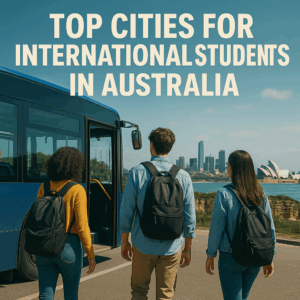Explore the true demand for nurses post-COVID, nursing shortages, migration tips, and career opportunities in Australia’s evolving healthcare landscape.
Introduction
Many believe the demand for nurses has normalized after COVID-19, but this is far from reality. The demand for nurses post-COVID remains critical worldwide, especially in Australia. This article busts common myths and provides clear insights and practical tips for nurses considering migration or career growth in the post-pandemic era.
Myth 1: “The Nursing Shortage is Over After COVID”
Reality: The nursing shortage has intensified, not eased. Australia alone faces a projected shortfall of over 85,000 nurses by 2025, increasing to more than 123,000 by 2030. The pandemic accelerated retirements and burnout, while population aging and healthcare reforms have increased demand.
Key factors driving this shortage include:
- Over 25% of Australia’s nurses are aged over 55 and nearing retirement.
- New aged care staffing mandates require 24/7 registered nurse presence, increasing workforce needs.
- Insufficient nursing education capacity limits new graduate numbers.
The shortage is long-term and structural, not a temporary post-pandemic issue.
Myth 2: “Nursing Jobs After COVID Are Less Secure or Limited”
Reality: Nursing careers remain highly secure and in-demand globally, with Australia actively recruiting internationally qualified nurses2. The government has introduced streamlined registration processes to reduce wait times for overseas nurses, reflecting a strong commitment to filling critical gaps.
Additional reasons nursing jobs are robust include:
- Healthcare is evolving, with nurses leading innovations in technology and care models.
- Regional and aged care sectors offer expanding opportunities through targeted migration pathways.
- The global demand for nurses continues to rise, offering international mobility and PR opportunities.
Nurses with updated skills and credentials have excellent job security and growth prospects.
Myth 3: “Nurse Migration Australia Post-Pandemic Is Too Difficult”
Reality: While migration processes can be complex, Australia has made nurse migration more accessible post-pandemic. Recent reforms include:
- A streamlined registration process for overseas nurses starting in 2025, reducing delays.
- Priority occupation status for nurses on the critical skills list, facilitating visa approvals and state nominations.
- Multiple visa pathways, including skilled independent and employer-sponsored options, support nurse migration and permanent residency.
Nurses should prepare by securing positive skills assessments, meeting English proficiency requirements, and exploring regional migration incentives.
Tips for Nurses Navigating Post-COVID Career and Migration
- Stay Updated on Registration Requirements: Follow AHPRA guidelines and take advantage of streamlined processes.
- Enhance Skills and Specializations: Focus on leadership, aged care, mental health, or digital health to increase employability.
- Consider Regional Opportunities: Regional Australia offers incentives and less competition for nursing roles.
- Engage with Migration Experts: Professional advice can simplify visa applications and improve success rates.
- Prepare Documentation Early: Skills assessments, English tests, and work references are essential for migration applications.
Conclusion
The demand for nurses post-COVID remains high and will continue growing in Australia and globally. Dispelling myths about shortages, job security, and migration challenges reveals a landscape full of opportunity for skilled nurses. With the right preparation and knowledge, nurses can secure rewarding careers and migration pathways in the evolving healthcare environment.

